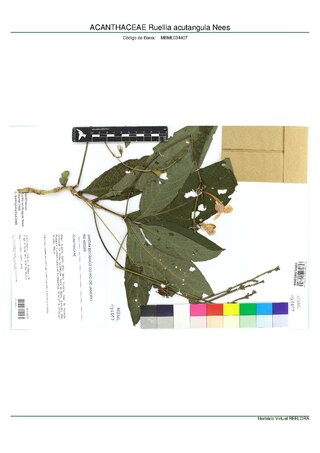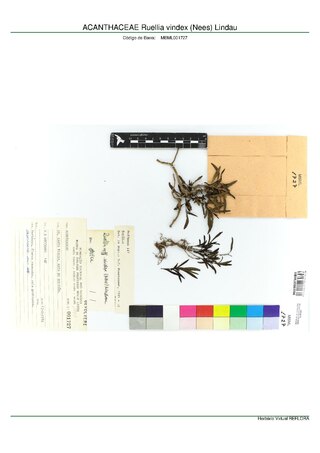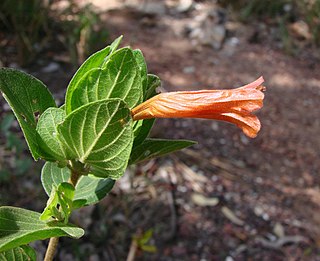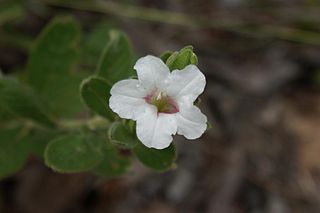
Ruellia acutangula is a plant native to the Cerrado vegetation of Brazil.
Dicliptera mucronifolia is a plant that is native of Cerrado vegetation in Brazil. This plant is cited in Flora Brasiliensis by Carl Friedrich Philipp von Martius.
Lepidagathis laxiflora is a plant native to the Cerrado vegetation of Brazil. This plant is cited in Flora Brasiliensis by Carl Friedrich Philipp von Martius.
Lophostachys falcata is a plant native to the Cerrado vegetation of Brazil. This plant is cited in Flora Brasiliensis by Carl Friedrich Philipp von Martius. Plants of the World Online considers it an unplaced taxon – "names that cannot be accepted, nor can they be put into synonymy."
Lepidagathis montana is a species of plant in the acanthus family, Acanthaceae. It is native to central Brazil, including the Espinhaço Range of Minas Gerais state northward to the Chapada Diamantina of Bahia state, and in the Federal District, Goias, and southern Maranhão. It grows in gallery forest and cerrado (savanna) in the southern part of its range. In the northern part of its range in Bahia state it grows in campo rupestre and scrubland.
Stenandrium pohlii, with Portuguese common names caiapiá or carapiá, is a plant native to Cerrado and Pantanal vegetation of Brazil. The description of the plant was published in Flora Brasiliensis in 1847.
Stenandrium hirsutum is a plant native to the Cerrado vegetation of Brazil. The description of the plant was published in Flora Brasiliensis in 1847.

Ruellia vindex is a plant native to Brazil, Guyana and Venezuela. This plant is cited in Flora Brasiliensis by Carl Friedrich Philipp von Martius.
Ruellia asperula is a medicinal plant native to Brazil and growing in Caatinga vegetation and Cerrado vegetation. Flowers, leaves, and roots of this plant are usually macerated and used to treat asthma, bronchitis, fever, flu, and uteral inflammation.
Ruellia hypericoides is a plant native to the Cerrado vegetation of Brazil. This plant is cited in Flora Brasiliensis by Carl Friedrich Philipp von Martius.

Ruellia villosa is a plant native to the Cerrado vegetation of Brazil. This plant is cited in Flora Brasiliensis by Carl Friedrich Philipp von Martius.
Ruellia menthoides is a plant native to the Cerrado vegetation of Brazil. This plant is cited in Flora Brasiliensis by Carl Friedrich Philipp von Martius.
Ruellia rasa is a plant native to the Cerrado vegetation of Brazil.
Ruellia pohlii is a plant native to the Cerrado vegetation of Brazil. This plant is cited in Flora Brasiliensis by Carl Friedrich Philipp von Martius.

Ruellia nitens is a plant native to the Cerrado vegetation of Brazil. This plant is cited in Flora Brasiliensis by Carl Friedrich Philipp von Martius.
Ruellia rufipila is a plant native of Cerrado vegetation of Brazil.

Ruellia macrantha, or Christmas pride, is a plant native to the cerrado vegetation of Brazil, which is usually used as an ornamental plant. This plant is cited in Flora Brasiliensis by Carl Friedrich Philipp von Martius.
Ruellia angustior is a plant native of Cerrado vegetation of Brazil. This plant is cited in Flora Brasiliensis by Carl Friedrich Philipp von Martius.
Ruellia diffusa is a plant native to the Cerrado vegetation of Brazil.




